History of the Santa Fe Railway
The Atchison & Topeka Railroad was chartered in 1859 to join the towns of its title and continue southwest toward Santa Fe, New Mexico.
“Santa Fe” was added to the corporate name in 1863. Construction started in 1869; by the end of 1872 the railroad extended to the Kansas-Colorado border, opening much of Kansas to settlement and carrying wheat and cattle east to markets. The railroad temporarily set aside its goal of Santa Fe — once the trading capital of the Spanish colony in that area — and continued building west, reaching Pueblo, Colorado, in 1876, just in time for the silver rush at Leadville, Colorado.
In 1878, the railroad resumed construction toward Santa Fe, building southwest from La Junta to Trinidad, Colorado, then south over Raton Pass. It chose that route instead of an easier route south across the plains from Dodge City because of Native American attacks and a lack of water on the southerly route and coal deposits near Trinidad, Colorado, and Raton, New Mexico.
Clash with the Rio Grande
The Denver & Rio Grande was also aiming at Raton Pass, but Santa Fe crews arose early one morning in 1878 and were hard at work with picks and shovels when the Rio Grande crews showed up after breakfast. At the same time the two railroads skirmished over occupancy of the Royal Gorge of the Arkansas River west of Canon City, Colorado; the Rio Grande won that battle.
The Santa Fe reached Albuquerque, New Mexico, in 1880 (because of geography the city of Santa Fe found itself at the end of a short branch from Lamy, New Mexico) and connected with the Southern Pacific at Deming, New Mexico, in 1881. The Santa Fe then built southwest from Benson, Arizona, to Nogales, on the Mexican border. There it connected with the Sonora Railway, which Santa Fe interests had constructed north from the Mexican port of Guaymas.
Atlantic & Pacific
The Atlantic & Pacific Railroad was chartered in 1866 to build west from Springfield, Missouri, through Amarillo, Texas, and Albuquerque, to a junction with the Southern Pacific at the Colorado River. The infant A&P had no rail connections. The line that was to become the St. Louis-San Francisco Railway (the Frisco) wouldn’t reach Springfield for another four years, and the Southern Pacific did not build east from Mojave to the Colorado River until 1883. The A&P started construction in 1868, built southwest into what would become Oklahoma, and entered receivership. As an operating railroad, the A&P dropped out of sight briefly, but not as a charter and corporate structure.
In 1879 the A&P struck a deal with the Santa Fe and the Frisco: Those railroads would jointly build and own the A&P west of Albuquerque. Construction began at Albuquerque, and in 1883 the A&P reached Needles, California, and a connection with the SP. Construction still hadn’t begun on the Tulsa-Albuquerque portion of the Atlantic & Pacific.
Expansion
The Santa Fe began to expand:
• a line from Barstow, California, to San Diego in 1885 and to Los Angeles in 1887
• control of the Gulf, Colorado & Santa Fe (Galveston to Fort Worth) in 1886 and construction of a line between Wichita and Fort Worth in 1887
• lines from Kansas City to Chicago, from Kiowa, Kansas, to Amarillo, Texas, and from Pueblo to Denver (paralleling the Denver & Rio Grande) in 1888
• purchase of the Frisco and the Colorado Midland in 1890
The depression of 1893 had the same effect on the Santa Fe that it had on many other railroads: financial problems and subsequent reorganization. In 1895 Santa Fe sold the Frisco and the Colorado Midland and wrote off the losses, but it retained control of the Atlantic & Pacific, and purchased it in 1898.
The Santa Fe still wanted to reach California on its own rails (it leased the Southern Pacific line from Needles through Barstow to Mojave), and the state of California eagerly courted the Santa Fe in order to break SP’s monopoly. In 1897 the Santa Fe traded the Sonora Railway to Southern Pacific for the SP line between Barstow and Mojave, giving the Santa Fe its own line from Chicago to the Pacific — Santa Fe all the way.
Subsequent expansion of the Santa Fe encompassed:
• a line from Amarillo to Pecos in 1899
• a line from Ash Fork, Arizona, to Phoenix in 1901
• the Belen Cutoff from the Pecos line at Texico to Isleta, south of Albuquerque, bypassing the grades of Raton Pass in 1907
• the Coleman Cutoff, from Texico to Coleman, Texas, near Brownwood in 1912
In 1907 Santa Fe and Southern Pacific jointly formed the Northwestern Pacific Railroad, which took over several short railroads and built new lines connecting them to form a route from San Francisco north to Eureka. In 1928 Santa Fe sold its half of the NWP to Southern Pacific.
Also in 1928 the Santa Fe purchased the U.S. portion of the Kansas City, Mexico & Orient Railway as a way to reach the oilfields of west Texas. Post-World War II construction projects included an entrance to Dallas from the north and relocation of the main line across northern Arizona.
Because long stretches of its main line traversed areas without water, Santa Fe was one of the first purchasers of diesel locomotives for road freight service. The road was known for its passenger trains, notably the Chicago–Los Angeles Super Chief, and for the on-line eating houses and dining cars operated by Fred Harvey.
Mergers
In 1960 the Santa Fe bought the Toledo, Peoria & Western Railroad, then sold a half interest to the Pennsylvania Railroad. The TP&W cut straight east across Illinois from near Fort Madison, Iowa, to a connection with the Pennsy at Effner, Indiana, forming a bypass around Chicago for traffic moving between the two lines. The TP&W route didn’t mesh with the traffic pattern Conrail developed after 1976, so Santa Fe bought back the other half, merged the TP&W in 1983, then sold it back into independence in 1989.
During the 1960s the Santa Fe explored merger with the Frisco and the Missouri Pacific with no success. By 1980 Santa Fe, which had been the top railroad in route mileage in the 1950s, was surrounded by larger railroads. It was well managed and profitable, and it had the best route between the Midwest and Southern California, but its neighbors were larger, and friendly connections had been taken over by rival railroads. Southern Pacific was in the same situation. In 1980 Santa Fe and SP proposed merger. Approval seemed certain, but in 1986 the Interstate Commerce Commission denied permission because the merger would create a railroad monopoly in New Mexico, Arizona, and California.
The Santa Fe, suddenly the smallest of the Super Seven freight railroads, began spinning off branches and secondary lines and became primarily a conduit for containers and trailers moving between the Midwest and Southern California. In June 1994 Santa Fe and Burlington Northern announced their intention to merge — BN would buy Santa Fe. The deal was consummated in 1995, forming the Burlington Northern Santa Fe, known today as BNSF Railway.





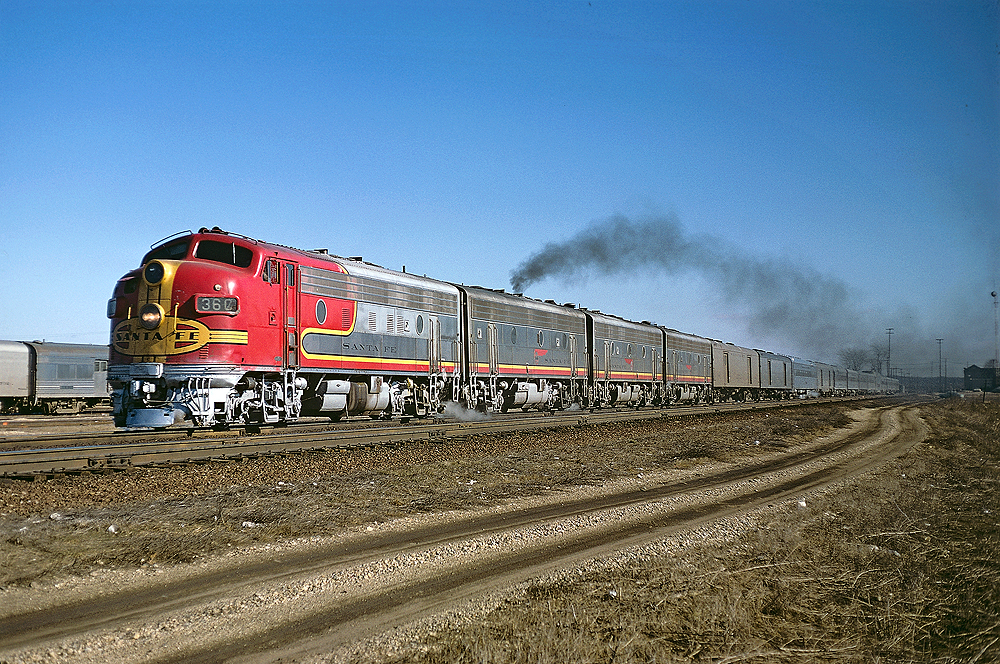
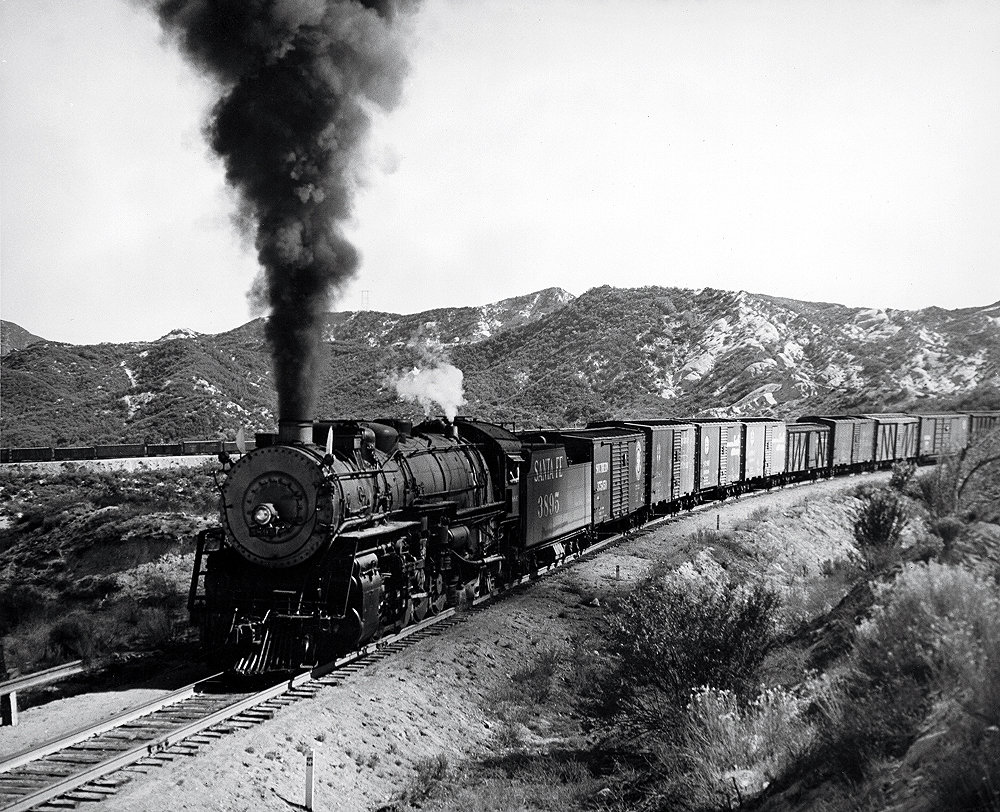
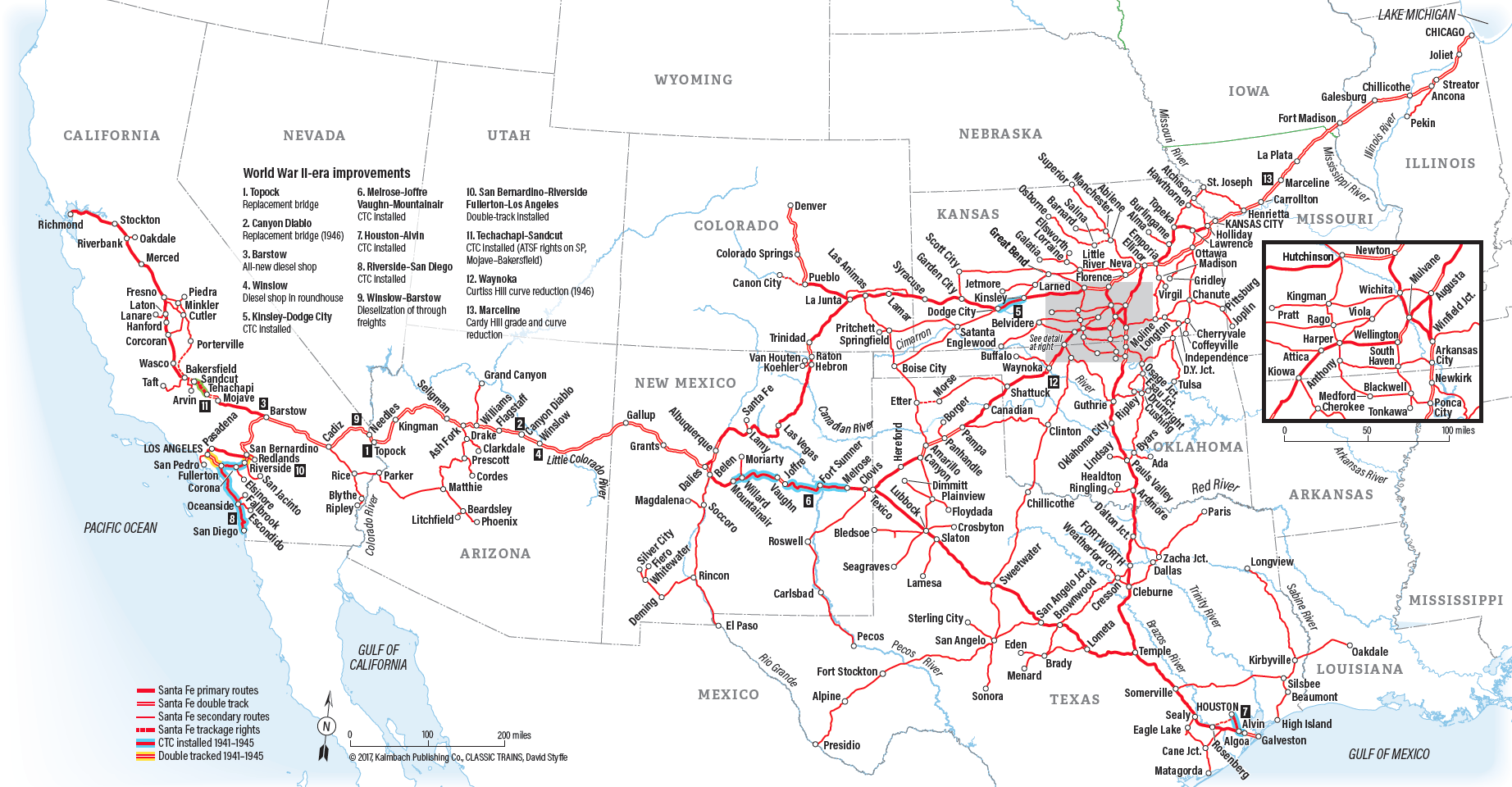
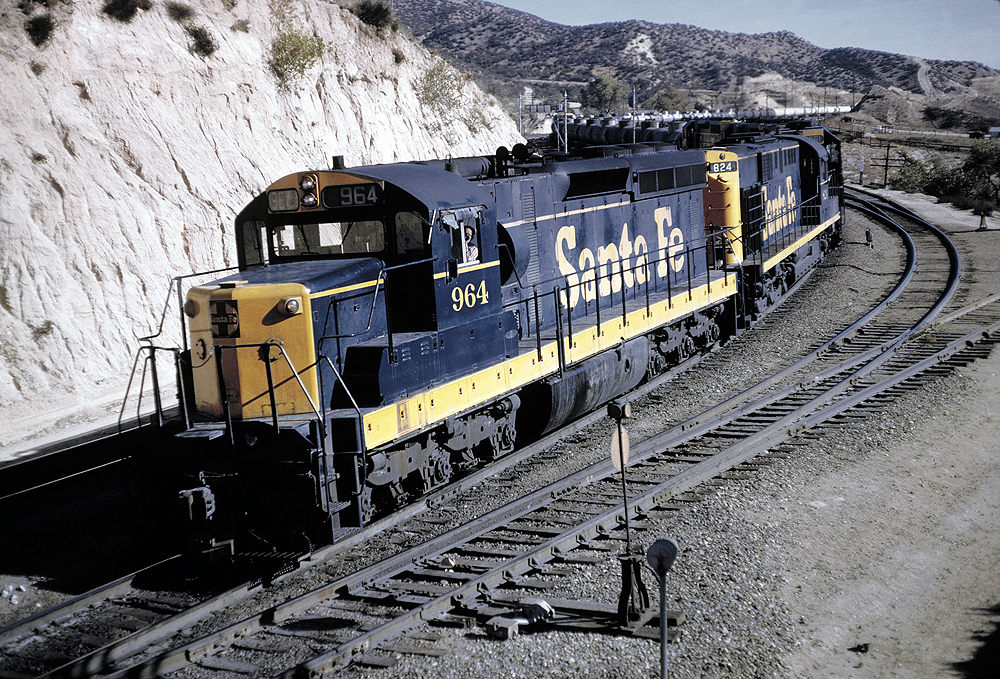


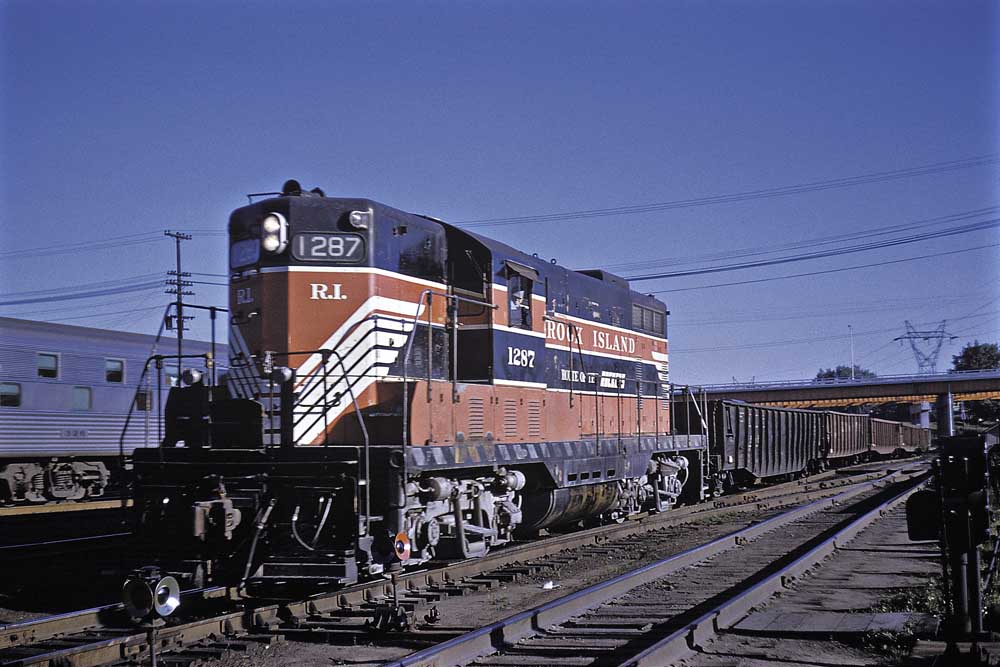
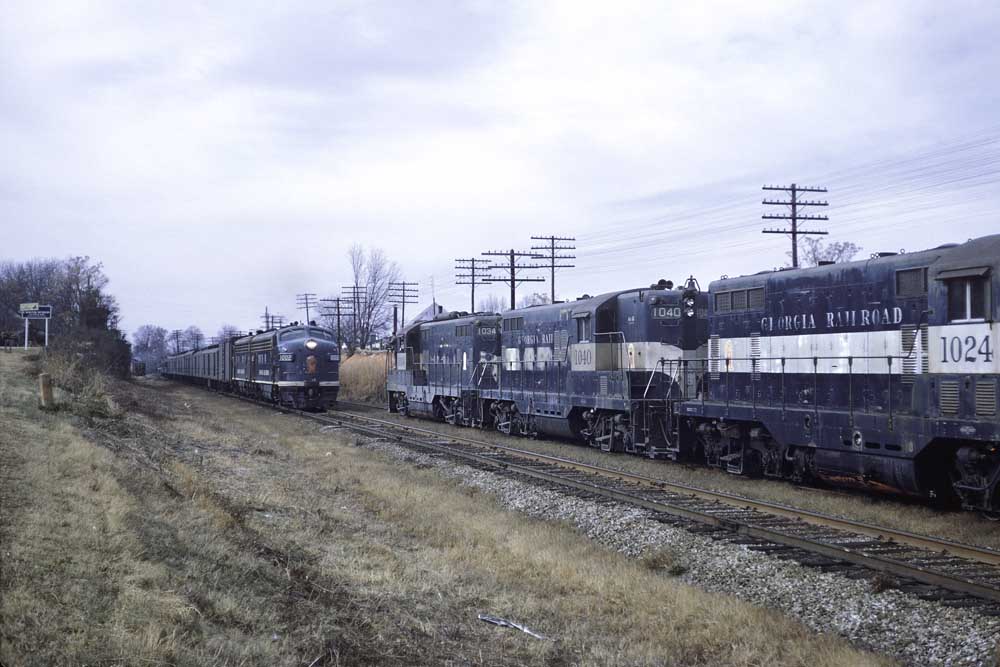
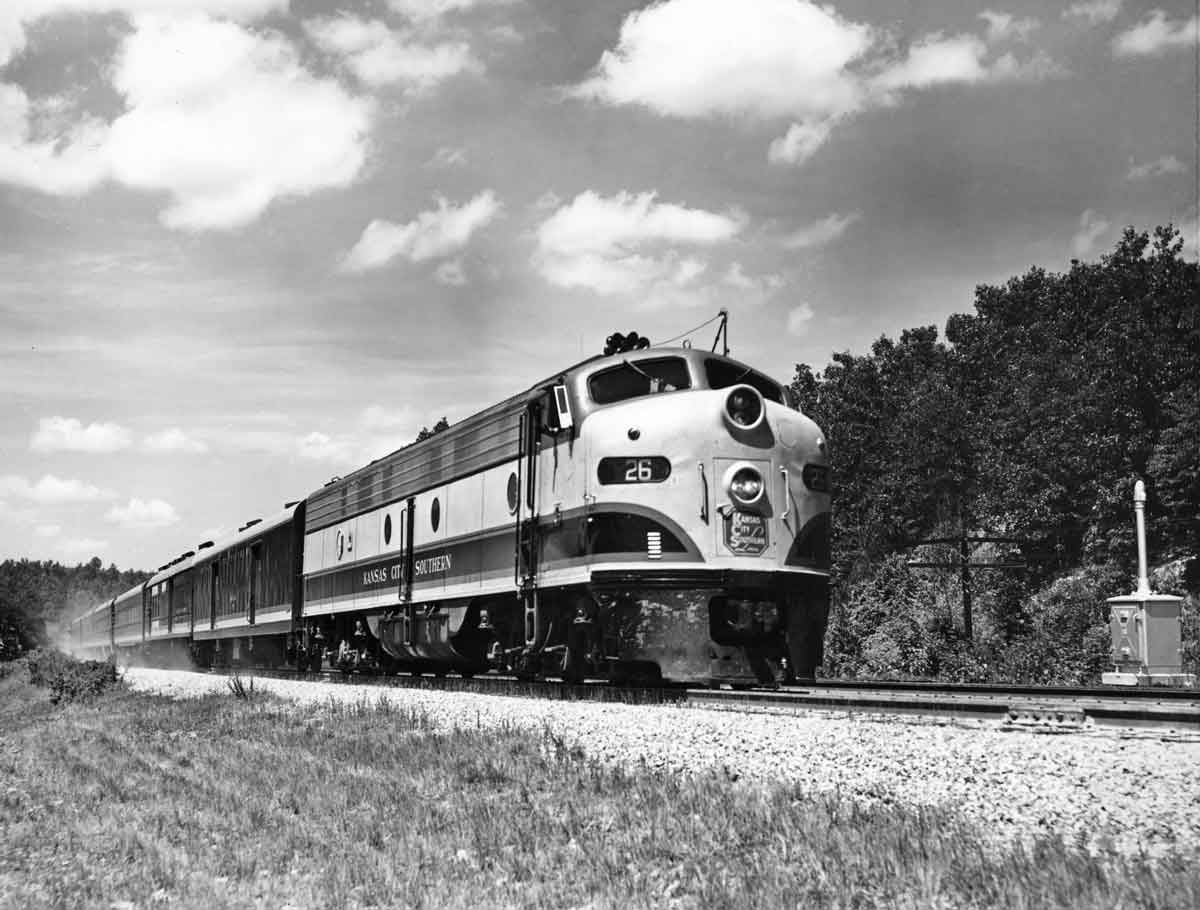




Robert Rose, I have been told that Frisco fans call BNSF-Been Nothing Since Frisco, had no idea the RR still had that many fans, many of them were not even alive when Frisco was running. And have heard CSX is crash, smash and explode because of many wrecks. The Facebook rail fans can get creative.
Did not realize that much of their early history had been with Frisco, even owning them one time. Now, they are reunited together under the umbrella of BNSF. Dad was dead already when BN took over Frisco and Mom who had worked for them too, hated to see the Frisco name removed from the yard office where he had worked. But they have kept Lindenwood Yard up and running and glad to see that, I can still drive by and see the yards where Dad worked, just a lot of orange engines instead of red/white. We never rode any of their trains as they did not come into St. Louis so it was easier to take City of St. Louis to CA, combined Wabash, later N&W/UP/SP train. And Dad’s pass would never have been good on their Super Chief and some of the others.
Nice to see a post from my old friend, Mike. I was there in 1968 for the 100th anniversary.A comment on Mr. Mense’s post: The Super Chief in 1967 did not have a dome observation car. Its only dome was the car that featured the Turquoise Room. And ATSF No. 17 didn’t have a dome with three berths. Perhaps he is referring to the California Zephyr’s CZ-10, which was a dome observation with three bedrooms and a drawing room.
BNSF – What the heck does that mean? Trains took BNSF and CSX to task for their unimaginative use of initials but neither has seen fit to change. KFC went back to calling itself Kentucky Fried Chicken and I think it is high time BNSF and CSX honored their heritage and did the same!
Having worked in the Santa Fe Railway and BNSF PR department 20 years, it’s always nice to see tribute articles on “The Atchison.” One point of clarification: construction on the Atchison, Topeka & Santa Fe Railroad began in late October 1868, not 1869. In October 1993, we held a 125th anniversary event in Topeka to commemorate the start of construction, with railroad founder “Cyrus K. Holliday” and Santa Fe Chairman Rob Krebs presiding. A fun time was had by all. Keep up the good work.
Matther McClure: Bravo and well said!!
I was and will always be a Santa Fe fan. This article was well done with a few minor glitches, some perhaps debaeable. I do appreciate how Trains and Classic Trains have been featuring both fallen flags and obscure small lines. The article on the Apache RR in the latest Trains was excellent; I love that little line! Would like to see a feature on the Verde Canyon, mainly a tourist excursion operation but still taking some freight into and out of the valley as the Prescott Branch did in the old days. That bit of Santa Fe history is especially near and dear to me. I fully agree that the “Native American” appelation is not favored by many Indians except a few of the young people touched with the “protest and demonstrate” bug. I grew up among various tribal members in Arizona and have friends and relatives who taught on the Navajo Reservation. Most tribal members prefer to be called by their tribe’s proper name (ie Dine for the Navajo) but accept Indian as a collective or broader term for their race. The native American term is silly as many of us are literally native having been born in this bit of geography!!
About the Sonora and the New Mexico & Arizona (Benson-Nogales-Guaymas). My understanding is that the Santa Fe let the SP begin to run its trains in 1897, leased it to SP in 1898, but did not actually swap legal ownership with SP for the line west from “The Needles” until 1911.
Actually there is no unanimity among indigenous peoples on what individuals or tribes wish to be called. To assume “Indian Leaders have rejected…” is to create a false narrative. There is nothing politically correct about trying to respect peoples and call them as they wish to be called. Years ago the Art Institute of Chicago had a very thorough exhibit of both ATSF original travel posters and items made by tribes along the line in NM and AZ. It was very thoughtfully weaved together. Most interesting was it was a combined effort by both whites and tribal members.
The Milwaukee Road also had its own line from Chicago to the Pacific.
Well-done narrative. One minor point: At the time (and, still, most of the time now), they were (and still are) called “Indians,” not the pseudo-politically correct “Native Americans.” Indians leaders themselves have rejected “native [no capital] American” for “Indian.”
Not mentioned in the article was that there was discussion of the Santa Fe purchasing the Western Pacific and retaining the California Zephyr. It’s sad that the CZ didn’t survive until Amtrak. The picture might be different today, especially if Amtrak had chosen to keep a single level train with domes to take full advantage of its scenic route.
I had the distinct pleasure of riding from Los Angles to Chicago on The Super Chief in 1967 in the dome observation car. The car had 3 berths and my father induced the porter to close and lock the door giving us in essence a private car experience . My sister bet the dinner captain that she could eat a large steak. The dinner captain got off somewhere in New Mexico to purchase a carton of strawberries for my sister. She was the only one to enjoy them at the next dinner seating while the other passengers wondered why they could not have them. We did the same thing going from Chicago to Oakland on The California Zephyr. That was railroading in the waning days when the RR’ ran them before Amtrak. At the age of 12 I did not fully comprehend what was taking place only learning later what took place.